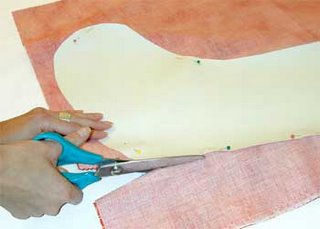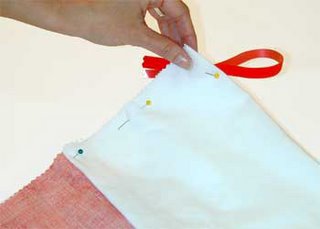If I could save time in a bottle
The first thing that I’d like to do
Is to save every day
Till eternity passes away
Just to spend them with you
If I could make days last forever
If words could make wishes come true
I’d save every day like a treasure and then,
Again, I would spend them with you
But there never seems to be enough time
To do the things you want to do
Once you find them
I’ve looked around enough to know
That you’re the one I want to go
Through time with
If I had a box just for wishes
And dreams that had never come true
The box would be empty
Except for the memory
Of how they were answered by you
But there never seems to be enough time
To do the things you want to do
Once you find them
I’ve looked around enough to know
That you’re the one I want to go
Through time with
Wednesday, December 21, 2005
Wednesday, December 14, 2005
Friday, December 09, 2005
sound of music
Raindrops on roses and whiskers on kittens
Bright copper kettles and warm woolen mittens
Brown paper packages tied up with strings
These are a few of my favorite things
Cream colored ponies and crisp apple streudels
Doorbells and sleigh bells and schnitzel with noodles
Wild geese that fly with the moon on their wings
These are a few of my favorite things
Girls in white dresses with blue satin sashes
Snowflakes that stay on my nose and eyelashes
Silver white winters that melt into springs
These are a few of my favorite things
When the dog bites
When the bee stings
When I'm feeling sad
I simply remember my favorite things
And then I don't feel so bad
Bright copper kettles and warm woolen mittens
Brown paper packages tied up with strings
These are a few of my favorite things
Cream colored ponies and crisp apple streudels
Doorbells and sleigh bells and schnitzel with noodles
Wild geese that fly with the moon on their wings
These are a few of my favorite things
Girls in white dresses with blue satin sashes
Snowflakes that stay on my nose and eyelashes
Silver white winters that melt into springs
These are a few of my favorite things
When the dog bites
When the bee stings
When I'm feeling sad
I simply remember my favorite things
And then I don't feel so bad
Tuesday, December 06, 2005
Friday, December 02, 2005
Stocking
How to Make a Stocking
Add a special touch to your holiday mantel by hanging Christmas stockings that you've made yourself. Make a unique stocking for each member of the family and use them for many Christmas seasons to come.
Steps:
1.
Use an old or inexpensive purchased Christmas stocking to make your own stocking pattern. Lay the stocking on a piece of newspaper or kraft paper and trace around the stocking with a pen or pencil, a 1/2 inch from the stocking edges. This will give you a 1/2-inch seam allowance.
2.
Choose 1 yard of fabric for each Christmas stocking to be made and 1/4 yard of fabric for each cuff. Use a holiday print, quilted holiday fabric, or solid-color fabric or felt for your stocking. Make sure you have a coordinating thread color on hand.
3.
Lay the stocking fabric on a flat work surface and fold it in half, lengthwise, right sides together. Pin your paper pattern to the fabric and use dressmaker shears to cut through the paper pattern and fabric along your marked line. Make sure you cut through both layers of fabric. Set these two pieces aside. (Image 1)
4.
Place the stocking cuff fabric on your work surface. Use a fabric cutting board, a yardstick or ruler, and a fabric-marking pen to measure out two pieces of fabric that each measure 14 inches long. Use the top measurement of your stocking pattern for the width. (Image 2)
5.
Fold each cuff piece in half, wrong sides together, so that you now have two pieces that are 7 inches in length and the top width of your stocking pattern.
6.
Pin each folded cuff piece to the wrong side of a stocking piece so that all raw edges meet. Place pins at 1/2-inch intervals. (Image 3)
7.
Use a sewing machine to stitch the cuff pieces to the stocking pieces. Sew 1/2 inch from the raw edges. Press the seams open with an iron.
8.
Pin the two sewn stocking pieces together. Make sure that all edges match up evenly and that the right sides of the stocking pieces are facing each other. The pins should be perpendicular to the fabric edges.
9.
Insert a folded length of ribbon or cording between stocking layers at the upper left cuff seam (to use to hang the stocking). The toe of the stocking should be pointing to your right. The ribbon or cording should be angled upward and inserted far enough between the layers to be caught in the 1/2-inch seam allowance. (Image 4)
10.
Stitch along the edges of your stocking, 1/2 inch from the raw fabric edges. Remove the pins as you sew.
11.
Turn the stocking right-side out and fold the cuff down so that the seam line is hidden inside the stocking. (Image 5)
12.
Hang up your new stocking and hope for lots of goodies.
1.
2.
4.
Tips:
Make your pattern from a stocking that is 18 inches to 20 inches long. If you opt to make a smaller stocking, you'll need less fabric. If your desired stocking size is larger, make sure you purchase a larger quantity of stocking fabric.
Draw your own stocking pattern onto the newspaper or kraft paper. Practice drawing the shape a few times before cutting out your pattern, and remember to add the 1/2-inch seam allowance. Make your stocking 18 inches to 20 inches in length and 12 inches to 14 inches in width at its widest point.
Make an elegant Christmas stocking by using cotton velveteen for your stocking fabric and a quilted satin fabric for your cuff.
Add any trim or embroidery to the cuff and body of the stocking before you sew the stocking edges.
Add a special touch to your holiday mantel by hanging Christmas stockings that you've made yourself. Make a unique stocking for each member of the family and use them for many Christmas seasons to come.
Steps:
1.
Use an old or inexpensive purchased Christmas stocking to make your own stocking pattern. Lay the stocking on a piece of newspaper or kraft paper and trace around the stocking with a pen or pencil, a 1/2 inch from the stocking edges. This will give you a 1/2-inch seam allowance.
2.
Choose 1 yard of fabric for each Christmas stocking to be made and 1/4 yard of fabric for each cuff. Use a holiday print, quilted holiday fabric, or solid-color fabric or felt for your stocking. Make sure you have a coordinating thread color on hand.
3.
Lay the stocking fabric on a flat work surface and fold it in half, lengthwise, right sides together. Pin your paper pattern to the fabric and use dressmaker shears to cut through the paper pattern and fabric along your marked line. Make sure you cut through both layers of fabric. Set these two pieces aside. (Image 1)
4.
Place the stocking cuff fabric on your work surface. Use a fabric cutting board, a yardstick or ruler, and a fabric-marking pen to measure out two pieces of fabric that each measure 14 inches long. Use the top measurement of your stocking pattern for the width. (Image 2)
5.
Fold each cuff piece in half, wrong sides together, so that you now have two pieces that are 7 inches in length and the top width of your stocking pattern.
6.
Pin each folded cuff piece to the wrong side of a stocking piece so that all raw edges meet. Place pins at 1/2-inch intervals. (Image 3)
7.
Use a sewing machine to stitch the cuff pieces to the stocking pieces. Sew 1/2 inch from the raw edges. Press the seams open with an iron.
8.
Pin the two sewn stocking pieces together. Make sure that all edges match up evenly and that the right sides of the stocking pieces are facing each other. The pins should be perpendicular to the fabric edges.
9.
Insert a folded length of ribbon or cording between stocking layers at the upper left cuff seam (to use to hang the stocking). The toe of the stocking should be pointing to your right. The ribbon or cording should be angled upward and inserted far enough between the layers to be caught in the 1/2-inch seam allowance. (Image 4)
10.
Stitch along the edges of your stocking, 1/2 inch from the raw fabric edges. Remove the pins as you sew.
11.
Turn the stocking right-side out and fold the cuff down so that the seam line is hidden inside the stocking. (Image 5)
12.
Hang up your new stocking and hope for lots of goodies.
1.

2.

4.

Tips:
Make your pattern from a stocking that is 18 inches to 20 inches long. If you opt to make a smaller stocking, you'll need less fabric. If your desired stocking size is larger, make sure you purchase a larger quantity of stocking fabric.
Draw your own stocking pattern onto the newspaper or kraft paper. Practice drawing the shape a few times before cutting out your pattern, and remember to add the 1/2-inch seam allowance. Make your stocking 18 inches to 20 inches in length and 12 inches to 14 inches in width at its widest point.
Make an elegant Christmas stocking by using cotton velveteen for your stocking fabric and a quilted satin fabric for your cuff.
Add any trim or embroidery to the cuff and body of the stocking before you sew the stocking edges.
Tuesday, November 22, 2005
NO T

No T-Shirt is so good! Their music reminds me of Joy Division. It's simple, heavy, dreamy, somber. It reminds me of like 12 years ago...younger then, more angst, limited view...
Anyways, I like it. I wish I could make it the theme music for this blog.
http://no_t_shirt.at.infoseek.co.jp/
http://www.myspace.com/notshirt
holiday
Broken Face
Thursday, November 17, 2005

Into the Mystic
by Van Morrison
We were born before the wind
Also younger than the sun
Ere the bonnie boat was won as we sailed into the mystic
Hark, now hear the sailors cry
Smell the sea and feel the sky
Let your soul and spirit fly into the mystic
And when that fog horn blows I will be coming home
And when that fog horn blows I want to hear it
I don’t have to fear itI want to rock your gypsy soul
Just like way back in the days of old
Then magnificently we will float into the mystic
And when that fog horn blows you know I will be coming home
And when thst fog horn whistle blows I got to hear it
I don’t have to fear it
I want to rock your gypsy soul
Just like way back in the days of old
And together we will float into the mystic
Come on girl...
Wednesday, November 16, 2005
Tuesday, November 15, 2005
New Canaan, Connecticut Philip Johnson1979 Pritzker Prize Laureate
Philip Johnson's Glass House has been called one of the world's most beautiful and yet least functional homes. Johnson did not envision it as a place to live so much as a stage... and a statement.
The basic concept for Johnson's glass house was borrowed from Mies van der Rohe, who was designing the glass-and-steel Farnsworth House during the same period. Unlike the Farnsworth House, however, Johnson's home is symmetrical and sits solidly on the ground. The interior space is divided by low walnut cabinets and a brick cylinder which contains the bathroom. The cylinder and the brick floors are a polished purple hue; the steel is dark gray. Included in the landscape are sculptures and a guest house
designing the glass-and-steel Farnsworth House during the same period. Unlike the Farnsworth House, however, Johnson's home is symmetrical and sits solidly on the ground. The interior space is divided by low walnut cabinets and a brick cylinder which contains the bathroom. The cylinder and the brick floors are a polished purple hue; the steel is dark gray. Included in the landscape are sculptures and a guest house 


NOTE: Philip Johnson also designed the Transco Tower in Houston and the Pennzoil Place and NCNB Center
Philip Johnson's Glass House has been called one of the world's most beautiful and yet least functional homes. Johnson did not envision it as a place to live so much as a stage... and a statement.
The basic concept for Johnson's glass house was borrowed from Mies van der Rohe, who was
 designing the glass-and-steel Farnsworth House during the same period. Unlike the Farnsworth House, however, Johnson's home is symmetrical and sits solidly on the ground. The interior space is divided by low walnut cabinets and a brick cylinder which contains the bathroom. The cylinder and the brick floors are a polished purple hue; the steel is dark gray. Included in the landscape are sculptures and a guest house
designing the glass-and-steel Farnsworth House during the same period. Unlike the Farnsworth House, however, Johnson's home is symmetrical and sits solidly on the ground. The interior space is divided by low walnut cabinets and a brick cylinder which contains the bathroom. The cylinder and the brick floors are a polished purple hue; the steel is dark gray. Included in the landscape are sculptures and a guest house 


NOTE: Philip Johnson also designed the Transco Tower in Houston and the Pennzoil Place and NCNB Center

Farnsworth House1946 to 1950Plano, IllinoisLudwig Mies van der Rohe
Hovering in a green landscape, this transparent glass house is often celebrated as Mies's most perfect expression of the International Style. The house is rectangular with eight steel columns set in two parallel rows. Suspended between columns are two steel-framed slabs (the ceiling and the roof) and a simple, glass-enclosed living space and porch.
All the exterior walls are glass, and the interior is entirely open except for a wood paneled area containing two bathrooms, a kitchen and service facilities. The floors and exterior decks are Italian travertine limestone. The steel is sanded smooth and painted a gleaming white.
The Farnsworth House took six years to design and build. During this period, Philip Johnson built his famous Glass House in New Canaan, Connecticut. However, Johnson's home is symmetrical, ground-hugging structure with a very different atmosphere.
Subscribe to:
Comments (Atom)















